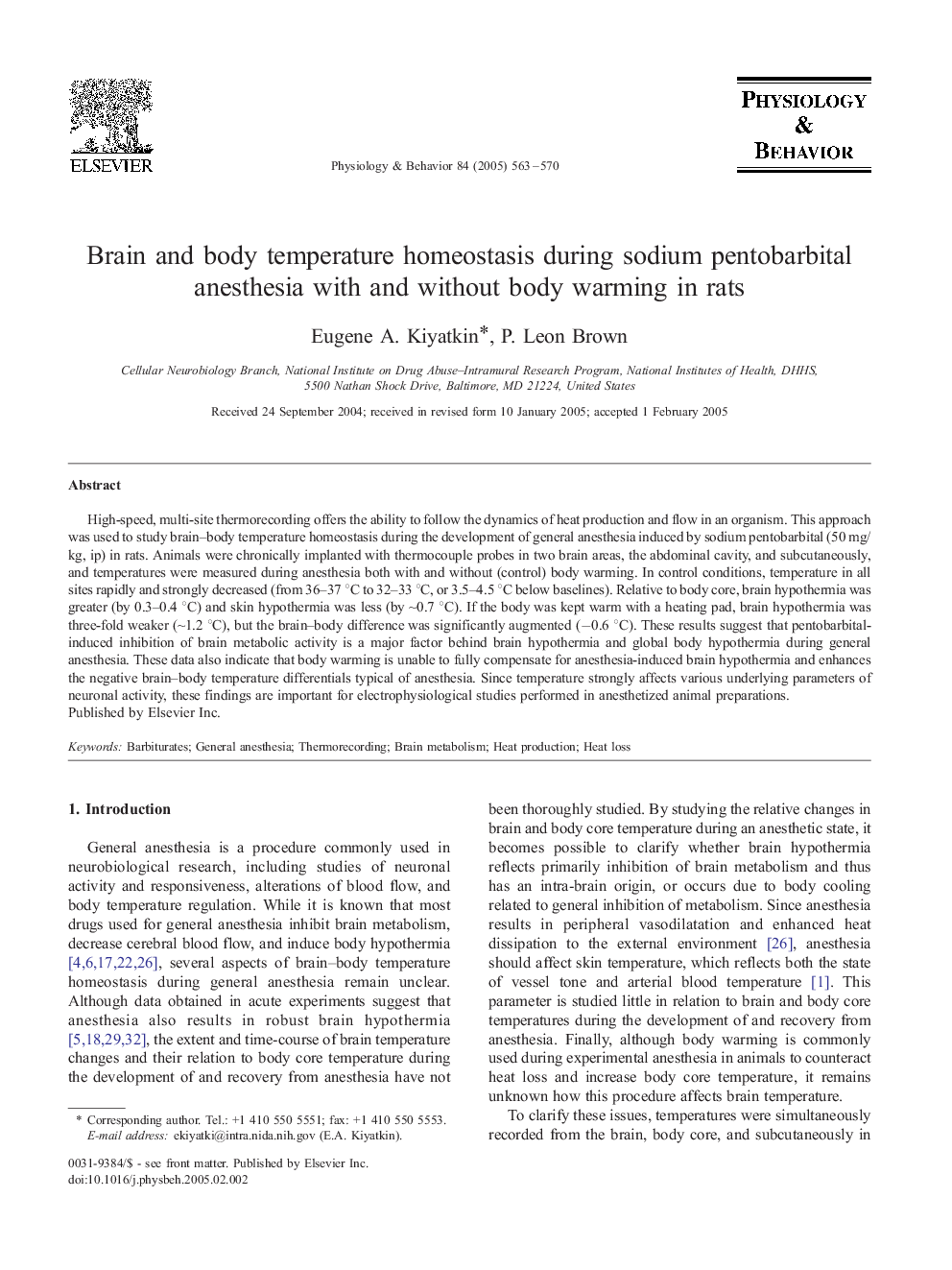| کد مقاله | کد نشریه | سال انتشار | مقاله انگلیسی | نسخه تمام متن |
|---|---|---|---|---|
| 9149673 | 1166432 | 2005 | 8 صفحه PDF | دانلود رایگان |
عنوان انگلیسی مقاله ISI
Brain and body temperature homeostasis during sodium pentobarbital anesthesia with and without body warming in rats
دانلود مقاله + سفارش ترجمه
دانلود مقاله ISI انگلیسی
رایگان برای ایرانیان
کلمات کلیدی
موضوعات مرتبط
علوم زیستی و بیوفناوری
بیوشیمی، ژنتیک و زیست شناسی مولکولی
فیزیولوژی
پیش نمایش صفحه اول مقاله

چکیده انگلیسی
High-speed, multi-site thermorecording offers the ability to follow the dynamics of heat production and flow in an organism. This approach was used to study brain-body temperature homeostasis during the development of general anesthesia induced by sodium pentobarbital (50 mg/kg, ip) in rats. Animals were chronically implanted with thermocouple probes in two brain areas, the abdominal cavity, and subcutaneously, and temperatures were measured during anesthesia both with and without (control) body warming. In control conditions, temperature in all sites rapidly and strongly decreased (from 36-37 °C to 32-33 °C, or 3.5-4.5 °C below baselines). Relative to body core, brain hypothermia was greater (by 0.3-0.4 °C) and skin hypothermia was less (by â¼0.7 °C). If the body was kept warm with a heating pad, brain hypothermia was three-fold weaker (â¼1.2 °C), but the brain-body difference was significantly augmented (â0.6 °C). These results suggest that pentobarbital-induced inhibition of brain metabolic activity is a major factor behind brain hypothermia and global body hypothermia during general anesthesia. These data also indicate that body warming is unable to fully compensate for anesthesia-induced brain hypothermia and enhances the negative brain-body temperature differentials typical of anesthesia. Since temperature strongly affects various underlying parameters of neuronal activity, these findings are important for electrophysiological studies performed in anesthetized animal preparations.
ناشر
Database: Elsevier - ScienceDirect (ساینس دایرکت)
Journal: Physiology & Behavior - Volume 84, Issue 4, 31 March 2005, Pages 563-570
Journal: Physiology & Behavior - Volume 84, Issue 4, 31 March 2005, Pages 563-570
نویسندگان
Eugene A. Kiyatkin, P. Leon Brown,